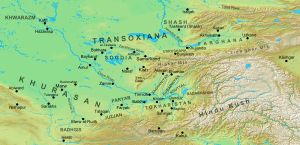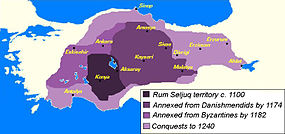What is a birdhawn in Arabic equestrian literature?
Most modern (i.e., XIXth century onwards) Arabic dictionaries offer similar definitions for the birdhawn (translations mine):
The al-Ra’id dictionary defines it as an “animal lesser than a horse, with thick body parts, stocky, especially used as a pack animal“.
The al-Wasit dictionary defines it as “a term for non-Arab horses and mules, from the equus genus, with a massive build, thick body parts, strong legs and large hooves“.
The al-Ghani dictionary defines it as “an animal from the equus genus, with a stocky frame, thick body parts, strong legs, large hooves, especially used as a pack animal“.
The al-Ma’aani dictionary defines the birdhawn as “an animal, lesser than horses but larger than donkeys; a Turkish horse“.
I find this last definition very interesting, because it aligns with the Western definition of a pony: larger than a donkey, but smaller than a horse. From the same species as a horse, but not quite a horse in size, use or status. The reference to Turkish horses is reminiscent of Kirghiz ponies (drawing below and photo both from Wikipedia).


The much older Lisan al-Arab dictionary (1290 CE) defines the birdhawn as: “a horse, other than the progeny of Arab horses” (al-baraadhin mina al-khayl: maa kaana min ghayri nitaaji al-‘irab).
The Nasiri book (1333 CE) adds more context, in the ninth section of Book 1, titled: “On the breeding of the kadish and the birdhawn“. Here is my translation of the relevant parts of this section:
As to the breeding of the kadish and the countrybreds (al-biqa’iyyat), a birdhawn [stallion] from Khurasan, meaning one from Rum (Rumi), must be mounted on a countrybred [mare]; this is better than putting a countrybred [stallion] on a Khurasani [mare].
In the Arabic literature of the time, Khurasan is the large historical region spanning North-Eastern Iran, Western Afghanistan, Turkmenistan and Uzbekistan (first map below). It was mainly settled by Turks. “Rum” normally means the Roman contemporaries of the Muslims (i.e., the Byzantines, who were Christians and spoke Greek). But at the time the Nasiri book was written, “Rum” was a reference to the Turkish Seljuk Sultanate of Rum, which had overrun Byzantine Anatolia, with its capital at Konya (second map below). The Sultanate of Rum was on the northern borders of the Mamluk Empire. This confirms the equivalence between the Rumi birdhawn and Khurasani birdhawn. Both can then taken to refer to the Turkish pony, as in the definition above.


Keeping with the Nasiri book, this funny section directly follows:
It is said that the first to have invented the breeding of those kadish was Chosroes, by mounting a horse on a cow, because of the strength of its [i.e., the cow] body parts and the extent of its patience; he had wanted to do what Alexander did with mules, when he put a horse on a donkey, but the cows produced a birdhawn instead, with a round conformation, thick legs, and a big head. Because of this [missing sentence will translate later].
And among these are the Sulaymani, and the ‘Aadi (a reference to the mythical pre-Islamic tribe of ‘Aad), and these are among the mounts of the jinns, which are talked about and which some people do see. As to the Arab horse that isasil, the jinn never approach it nor do they ride it. This is because of the saying of the Prophet PBUH: “The jinn do not manisfest themselves to anyone in a home with an authentic (‘atiq) horse.
This is all so interesting! Some of the more recent definitions of birdhawn make me think of a cob – sturdy, robust, smaller than a horse – but I now have a question as to how the countrybreds fit into this scheme of equine classification!
The interspecies hybrid birdhawn makes me laugh. I wonder what the story refers to, whether there is some historical nugget there, or if it is some sort of Just So Story.
Also, it is good to be reminded that Rum does not always refer to the Romans/Byzantium!
Fascinating. Thanks for sharing Edouard.
Notice how in the last paragraph, “asil Arab” and “‘atiq” are used interchangeably.
Couple of more dictionaries that are a bit earlier:
Birdhawn in:
al- Mutarrizi (1213): The turkish one of horses.
Mukhtar al-sihah (1266): equid (daabba)
Taj al lugha w sihah al 3rabiyya (1003): equid (daabba)
“I saw that you went around the horse-course with thirty horsemen (jawla), and you were on an equid (birdhawna) without excellence”
Kitab al 3ain (786): bardhana is the pace of the equid (birdhawn) and the horse (faras), the horse that walks like an equid (birdhawn), anything that walks like the birdhawn.
I would translate that quote from kitab al-3ayn differently. I would say:
“al-bardhanah is the pace of the pack horse (birdhawn) and of the riding horse (faras) that walks like a pack horse (birdhawn), anything that walks like the birdhawn.”
The verb can hence be applied to riding horse that moves like a pack horse. Faras would be “riding horse” and the Faaris is “the horse rider”. What about that?
I think we should be very careful with birdhawn. Early dictionaries and hadith texts place the faras and birdhawn as seperate categories, as if they are opposites or not belonging to the same species.
The fact that the definition or synonym in most lexicons is daabba, which is used for “creature” but in specific context as “equid” is telling. I shared the entry from Kitab al 3ain, th very first arabic dictionary, because it shows us that perhaps birdhawn is not a horse. Now we know that mules and donkeys/asses display slightly different locomotion, and it seems it is that difference that is meant in kitab al 3ain.
That birdhawn would be a “lesser kind of horse”as is sometimes suggested is refuted by the entry from Taj al Lugha, as it states that there are birdhawns without excellence, so no doubt there can be good ones too.
It is interesting to learn that a few centuries later, in lisan al 3arab, the birdhawn is now seen as part of khayl (which not neccesarily means horses, but rather all things horsey/equine(long story about the base-root that I intend to write down at some point).
So birdhawn is no doubt an equid, and as some lexicons suggest, perhaps a hybrid, mule??, as they were particularly used as packanimals. For example in Bukhari book 56, hadith 79, birdhawn is not among khayl, rather used to illustrate that faras (khayl) is a ridden horse, and baradhin are not ridden.
More than just equids, I believe both faras and birdhawn are what we call today horses, but the difference between them is in function and hence status: within horses, a faras is a charger, a mount, a riding horse, while a birdhawn is a pack horse. It can still be a good pack horse. One is an upper class horse, and the other is a lower class horse.
Of course the meaning of these words evolves. In the XIVth century at the time the Nasiri book and the Lesan al-Arab dictionary were produced, a birdhawn was: “a horse, other than the progeny of Arab horses” (al-baraadhin mina al-khayl: maa kaana min ghayri nitaaji al-‘irab).
Greetings,
First, thanks for explaining the term.
Second, would you happen to know whether these horses are bred in Egypt?
Thanks